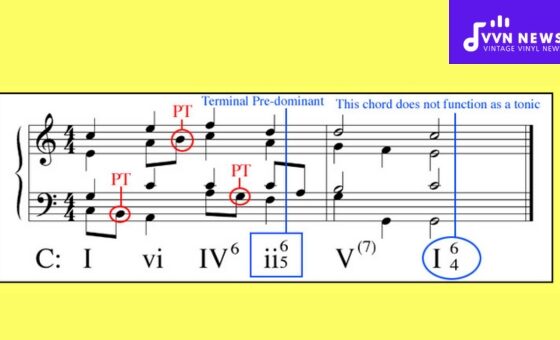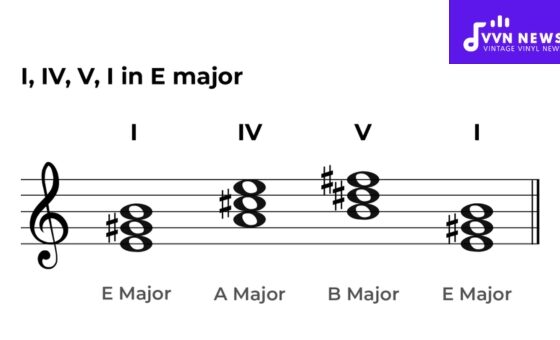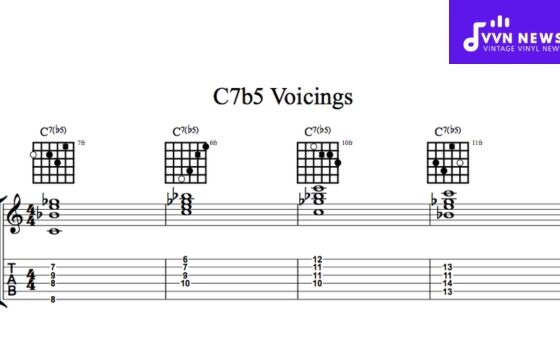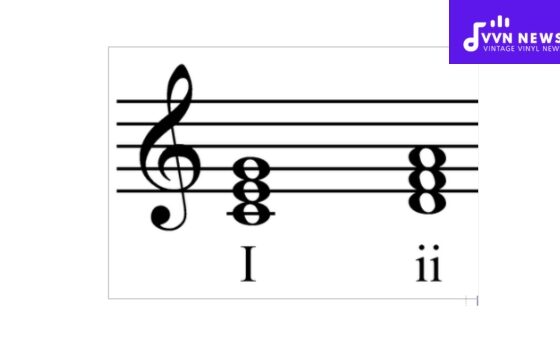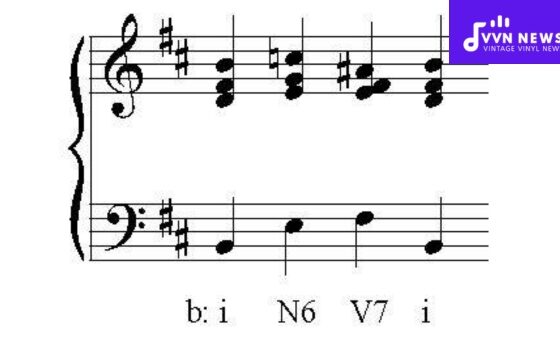Transposing music can often seem daunting if you’re not familiar with the process, but it doesn’t have to be.
You may find yourself needing to know how to transpose up an octave, whether you’re a vocalist who needs the pitch raised to suit your range better or an instrumentalist trying to match parts with fellow musicians.
In the world of music, moving up an octave can open up a whole new character and texture within a piece.
If you’re curious about harnessing this technique to enhance your musical arrangements or simply aiming to keep things fresh during practice, I’ll walk you through the steps.
Through clear explanation, I’ll ensure that by the end of this article, you’ll be equipped with the knowledge needed to confidently shift any piece of music up an octave with ease.
What Is an Octave in Music?
An octave is a term I find utterly fascinating it represents the interval between one musical pitch and another with double its frequency.
Octaves are what you’re hearing when two notes sound the same, yet one is higher than the other.
For example, if you play a C note on a piano, and then play the next C note up or down on the keyboard, those notes are an octave apart.
Octaves are foundational in music theory and are used to organize musical pitches in scales across various instruments.
They are also crucial building blocks for harmony and melody in compositions. By grasping the concept of octaves, you’ll better understand music’s structure and how to transpose it effectively.
How to Transpose Up an Octave Within the Same Clef?
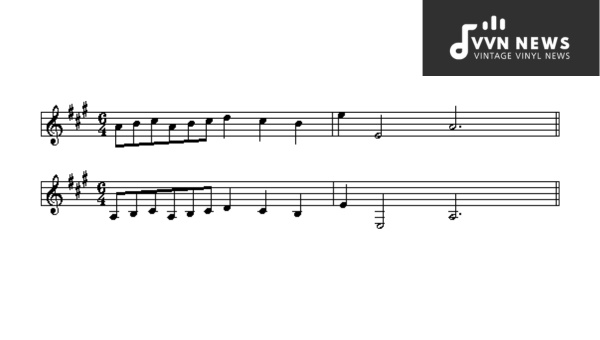
If you’ve honed your ability to read and play music within a particular clef, then leaping to transpose up an octave while remaining in the same clef is not as intimidating as it might seem.
Follow these steps, and you’ll elevate your music literally and figuratively with poise.
- Identify the Original Pitch: Begin by pinpointing the exact note or sequence of notes that require transposition. This clarity is crucial before you proceed.
- Move Each Note Up 8 Steps: Since an octave spans eight notes of the scale (including the starting note), shift every note up by eight scale degrees or steps. If you’re dealing with sheet music, this means moving from one line to the space directly above it and vice versa.
- Adjust for Key Signatures: Keep a vigilant eye on key signatures. Transposing up an octave does not change sharp or flat designations of notes unless the key signature has them inherently. Maintain consistency in accidental alterations unless instructed otherwise by a new key signature.
- Retain Rhythmic Values: Ensure that while you’re transposing pitches, rhythmic values—whole notes, half notes, quarter notes, etc—remain unchanged. The rhythm of the piece should stay exactly as written; only pitch is affected in this process.
- Verify Octave Shifts with Intervals: To double-check your work, look at intervals between consecutive notes. If a third was present before transposition between two notes, after adjusting those same two notes up an octave, a third should still be there; it’s just that both tones are now eight scale degrees higher.
- Check for Ledger Lines: When moving your music up an octave on staff paper that’s limited to five lines, additional ledger lines may be required for those higher pitches.
- Rehearse at Your Instrument: This can’t be overstated! Take what you’ve transposed and play it through slowly at first to ensure accuracy and comfortability at this new pitch range.
Also Read: Cordoba C7 CD Review [Is This The Perfect Classical Guitar?]
Considerations when Transposing:
- Instrument Range: Be mindful if the instrument has any limitations regarding its playable range.
- Vocal Strain: Ascertain whether the shift may cause strain for singers.
Transposing within the same clef essentially keeps you within familiar territory when reading music—it’s just those pitches sound higher than before!
What Are the Differences Between Octaves in Various Clefs?
When diving into the world of transposition, it’s crucial to understand the unique roles of clefs.
A clef signals the pitch range for the stave (or staff) lines and spaces on sheet music.
The most common clefs include Treble, Bass, Alto, and Tenor. Each clef is associated with distinct octaves on a musical instrument, and this represents one of their primary differences.
Treble Clef
The Treble Clef, also known as the G-clef, spirals around the second line from the bottom.
This indicates that the line represents the pitch G4 (also called G above middle C).
It mainly corresponds to higher octaves suitable for instruments like violins, flutes, and women’s vocal ranges (sopranos).
Bass Clef
Conversely, the Bass Clef, familiarly called F-clef, has two dots on either side of the fourth line from the bottom of the stave.
This denotes that line as F3 (one F below middle C), catering to lower octaves.
Instruments like bassoons, trombones, cellos, and men’s vocal ranges are often notated in this clef.
Alto & Tenor Clefs
The lesser-utilized Alto and Tenor Clefs belong to a family known as C-clefs.
Here, middle C is positioned on a specific line – for Alto it’s right down to third; for Tenor, it shifts up to fourth.
These clefs traverse more central octaves compared to treble and bass clefs.
Also Read: DubTurbo Review – The Software Shortcut To Making Dubstep
Octave Transposition Across Clefs
Given these variations in pitch representation across different clefs, if I wanted to transpose music up an octave within one clef—say moving from Middle C in bass clef (C3) to another C—it would lie an octave higher still within bass clef range (C4).
But an octave leap from treble is another story; transposing from Middle C in treble clef (C4) would land me at high C in treble clef’s upper spectrum (C5), which might extend beyond certain instruments’ or singers’ ranges.
It’s imperative when you’re transposing across these diverse terrains to ensure that notes don’t just ascend by an octave but fit comfortably within an instrument’s playability or a vocalist’s range for performance purposes.
So, let’s say you’re working with music written primarily in alto or tenor clefs.
It would be best if you always considered how shifting up an octave might necessitate transposition into a different cleffing regime like treble or bass, depending upon instrumental or vocal requirements.
How Can You Transpose Music Up an Octave Across Different Clefs?

In music, transposing is akin to moving a piece of furniture in your home. It changes the context and feels of the room.
When you come across a piece that sits comfortably in one clef but needs to be played higher, transposing across different clefs becomes your tool for re-imagination.
Clefs and Their Roles
Before we begin transposing, it’s crucial to understand the role of clefs. Clefs are symbols at the beginning of the staff that determine the pitch range for notes on that staff. The most common clefs you will encounter are:
- The Treble Clef, usually houses notes for higher-pitched instruments like violin or flute.
- The Bass Clef, grounding notes for lower-pitched instruments like tuba or bass guitar.
- The Alto and Tenor Clefs, are often used for specific ranges within mid-pitched instruments like viola or cello.
Transposition Steps Across Clefs
When transposing up an octave across different clefs, follow these steps for precision:
Identify Your Starting Point:
- Determine in which clef the original piece is written.
- Recognize the key signature and time signature as they will remain consistent after transposition.
Map Out Your Target Octave:
- Decide on the target clef you’ll be moving into based on instrument or vocal range.
Actual Transposition:
- Move each note up by an interval of an octave within the new clef.
- Remember that when shifting from treble to a bass clef or vice versa, middle C can serve as a pivot point since it appears in both staves albeit at opposite ends.
Adjust Accidentals if Necessary:
- Check if any sharps, flats, or naturals must be modified due to octave change.
- Ensure that every accidental follows each note it is associated with during the shift.
Tips for Effective Transposition
- Use mnemonics to remember note positions relative to each clef: FACE for spaces in the treble clef and All Cows Eat Grass for spaces in the bass clef.
- Practice drawing empty staves and placing notes until you’re comfortable with their new positions.
By mastering this method, music previously confined by pitch limitations gains a breadth of expression, bringing new life to familiar melodies.
Also Read: Roadie 2 Review 2025 [Features, Advantages, Setup And Usage]
What Are the Common Challenges and Solutions in Transposing Up an Octave?
When I first approached the task of transposing music up an octave, it wasn’t without a few hiccups along the way.
Depending on the complexity of the piece and your familiarity with your instrument, you might encounter some challenges.
Let’s dive into these issues and explore practical solutions to get you transposing smoothly.
Retaining Accidental Consistency
A common pitfall during transposition is losing track of accidentals, such as sharps, flats, and naturals that alter a note’s pitch.
As you move notes up an octave, maintaining the integrity of these accidentals is crucial for preserving the piece’s tonal quality.
Solution: Make a checklist or visual reference for consistency. Take each line or measure at a time, scanning for accidentals before shifting anything up!
Instrumental Range Limitations
Some instruments have range limitations that can prevent playing certain notes if transposed directly up an octave.
This issue can lead to frustration if you find that your instrument physically can’t reach those new notes.
Solution: Modify your arrangement by octave displacement for specific notes—where you strategically keep some notes in their original position when necessary while transposing others.
Reading Between Clefs
If you’re not accustomed to reading music across different clefs, say from bass to treble, transposing can get tricky, especially when moving between instruments like cello and violin.
Solution: Start by acquainting yourself with both clefs independently.
Practicing scales within both clefs can provide a more seamless transition. Utilizing clef-transposing charts can make this process more intuitive as well.
Keeping Track of Harmonic Intervals
When working in ensemble settings, it’s easy to transpose your part correctly but end up clashing with harmony as other instruments may not be shifted in tandem.
Solution: Always consider the piece’s harmonic context. If necessary, sit down with other musicians or use software to hear how each transposed part will interact, isolating potential disharmony before it strikes during the performance.
By focusing on each challenge, taking respective solutions one step at a time, and implementing them thoroughly throughout your practice sessions or arrangements, you’ll soon notice that what was once daunting becomes second nature, leaving more space for creativity and expression in every note you play or sing.
Also Read: 20 Best Reverb Pedals For 2025 [Inject New Life Into Your Tone]
FAQs on Transposing Music an Octave Higher
How do I know if a piece needs transposing up an octave?
You’ll often find the need to transpose when the original pitch is too low for a vocalist or if you want to match instrument ranges.
Can any instrument transpose music up an octave?
Yes, virtually any melodic instrument can transpose music up an octave, but it may depend on the instrument’s range.
Does transposing affect the key signature?
Transposing up an octave does not change the key signature; it simply shifts the pitch higher within the same key.
Will transposing up an octave alter the chord structures?
No, it won’t. Chord structures remain intact, only pitched higher overall.
Is it common to transpose during live performances?
Absolutely. Transposing is a common method used by musicians to adjust songs live, ensuring they fit comfortably within vocal ranges or instrumental capabilities.
Conclusion
To transpose music up an octave, you take each note and move it up to the next corresponding note an octave higher.
Whether you’re doing this within the same clef or across different ones, the essence remains consistent: elevate every single note by the same interval of an octave.
Be mindful of clef changes and key signatures, ensuring that you maintain the piece’s integrity even as you shift its pitch.

